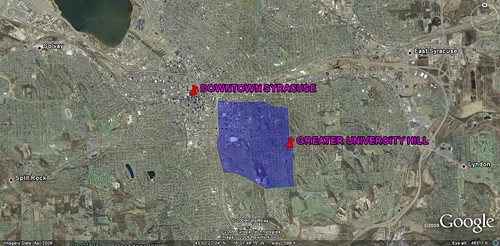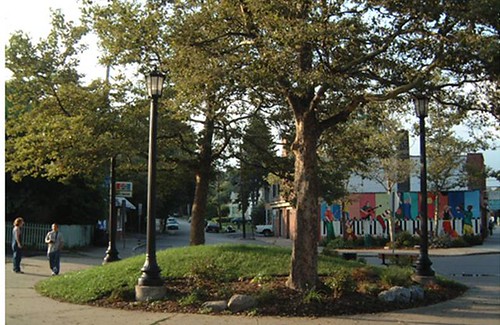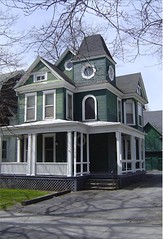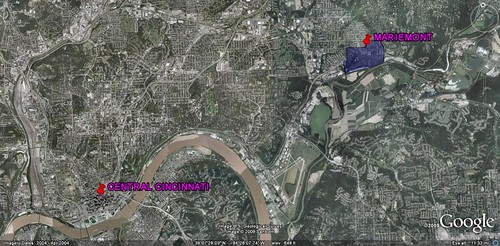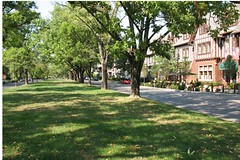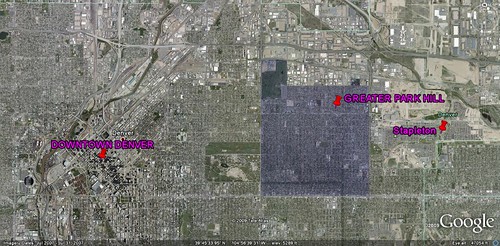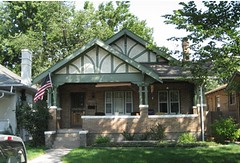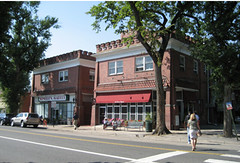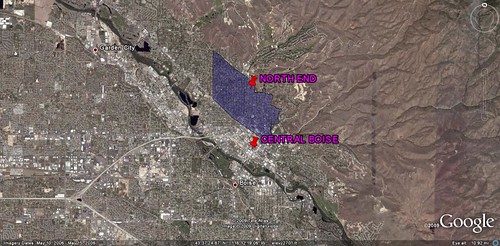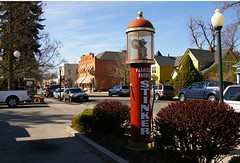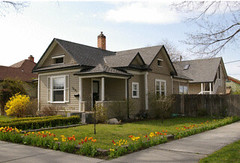Ten great American neighborhoods, by APA

Posted March 2, 2009 at 1:30PM
Every year, the American Planning Association honors ten neighborhoods among its "Great Places in America" awards. The organization is now taking nominations for its 2009 honorees, which will be announced later this year. Here's what APA says about the components of great neighborhoods:
Characteristics of a Great Neighborhood include:
- Has a variety of functional attributes that contribute to a resident's day-to-day living (i.e. residential, commercial, or mixed-uses).
- Accommodates multi-modal transportation (i.e. pedestrians, bicyclists, drivers).
- Has design and architectural features that are visually interesting.
- Encourages human contact and social activities.
- Promotes community involvement and maintains a secure environment.
- Promotes sustainability and responds to climatic demands.
- Has a memorable character.
Those certainly describe places that I would like to inhabit or visit. APA also makes it clear that it wants to recognize mature communities that are at least ten years old, distinguishing this list from an otherwise similar one that I highlighted last year.
The solicitation for 2009 gives me an opportunity to write about the 2008 honorees, which I've been meaning to do for some time. They are terrific examples of what we want our communities, new or old, to be. I'll very briefly present four of them, with links to more information and images, and then list the rest. Moving roughly east to west:
Syracuse, New York - Greater University Hill
Greater University Hill is a large district southeast of Syracuse, New York's downtown. APA applauds the neighborhood's tradition of community engagement, fine residential architecture, and its role as an economic engine for central upstate New York, hosting some 20,000 jobs. APA also points to a new shuttle bus and other improvements stemming from a recent partnership between the Syracuse University community and city government. See a slide show and learn more about what makes "the Hill" work here.
Mariemont, Ohio - Village of Mariemont
The compact, walkable Village of Mariemont lies some 10 miles northeast of Downtown Cincinnati. Much smaller than Greater University Hill, Mariemont is suburban in character yet historic, dating its beginnings back to 1923. APA says the village "has just over 3,000 people yet includes schools and recreational space, and is centered around a town square and commercial district featuring small shops and a theater. The village offers a prospect of 1920s American architecture, comprising styles from art deco to colonial revival to English Tudor revival - a juxtaposition that orients visitors in another time and place." Slide show and details are here.
Denver, Colorado - Greater Park Hill
Greater Park Hill is another large neighborhood located in between downtown Denver to the west and the ambitious Stapleton development to the east. Park Hill's story is inspiring:
"The largest share of Denver's tree-lined parkways is located in Park Hill. Developed at the height of the City Beautiful movement, these 'shaded drives,' used frequently by runners and walkers, are at least 10 degrees cooler during the city's hot and dry summers. Nearby amenities include City Park, Denver's largest; the Denver Museum of Nature and Science; and the Denver Zoo . . .
"In 1956, an increasing number of African American residents in Park Hill led ministers from area churches to urge their parishioners to welcome their new neighbors regardless of color or ethnicity. This led to the formation of the Park Hill Action Committee - now named the Greater Park Hill Community, Inc. - and national recognition for Park Hill's effectiveness in encouraging ethnic and economic diversity. To promote greater acceptance of the new black residents, the organization held block parties on all-white blocks so that existing residents could find out they had more similarities than differences . . . Pride is so strong here former resident and NBA basketball star Chauncey Billups has the neighborhood's name tattooed on his arm."
Photos and more narrative on Greater Park Hill may be found here.
Boise, Idaho - North End
Boise's North End is also a large district, adjacent to Boise's downtown and extending to the edge of town where the foothills begin. It became Boise's first suburb in the late 19th century and despite great, diverse architecture and walkable streets, it fell into decline. But the community now represents a stunning revitalization success story, spearheaded by a combination of municipal incentives and citizen activism:
"Adjacent to downtown and the state capitol, Boise, Idaho's North End neighborhood is a singular example of the American inner-ring suburb: handsome and diverse building stock; expansive, tree-lined streets; and proximity to schools, pocket parks, and amenities. Considered one of Boise's most desirable places to live, it was not always so.
"Following World War II and continuing through the 1960s, North End underwent serious decline, eventually bordering on becoming a slum. A concerned, diverse coalition of local residents and community leaders joined together to plan a different outcome. For this neighborhood activism, coupled with common-sense planning and the neighborhood's enduring physical beauty and qualities, the American Planning Association (APA) is designating Boise's North End one of 10 Great Neighborhoods for 2008."
Read more and view images here.
I'm not sure what to make of the fact that, of the four neighborhoods I decided to highlight, two are "Hills" and a third has "mont" in its name. I do think it is significant that all four are older communities. APA didn't find a lot to love about neighborhoods built since 1960, and I can't say that I am surprised. Here are the other six honorees (one of which is yet another "Hill"!):
- Baltimore, Maryland: Charles Village
- Salem, Massachusetts: Downtown Salem
- Sheridan, Wyoming: Downtown Sheridan
- Los Angeles, California: Echo Park
- Wichita, Kansas: Old Town
- Philadelphia, Pennsylvania: Society Hill
These places all teach us something about the future communities we wish to build and rehabilitate. As part of its "Great Places in America" program, APA also honors "great streets" and "great public spaces," all worth checking out.
